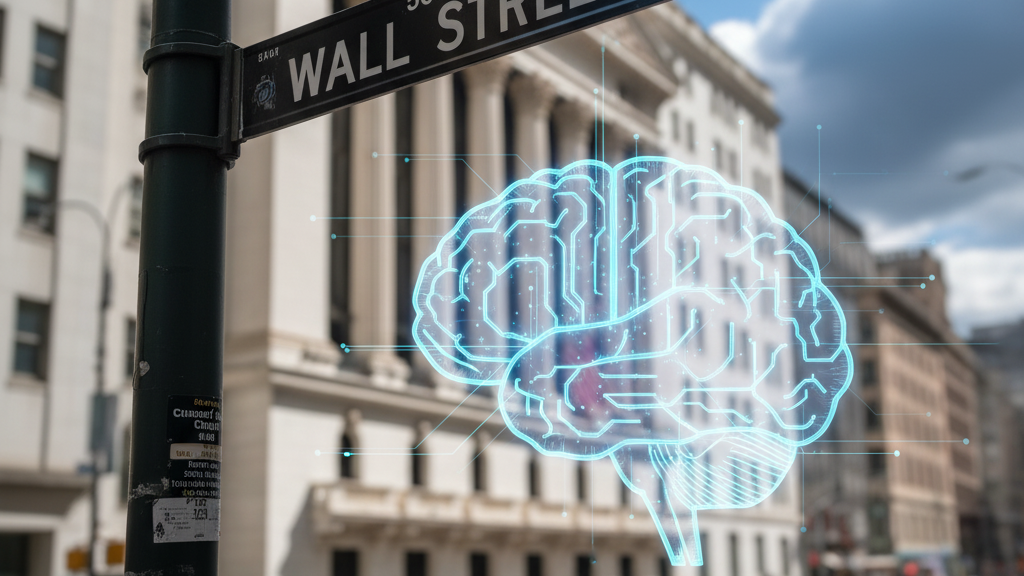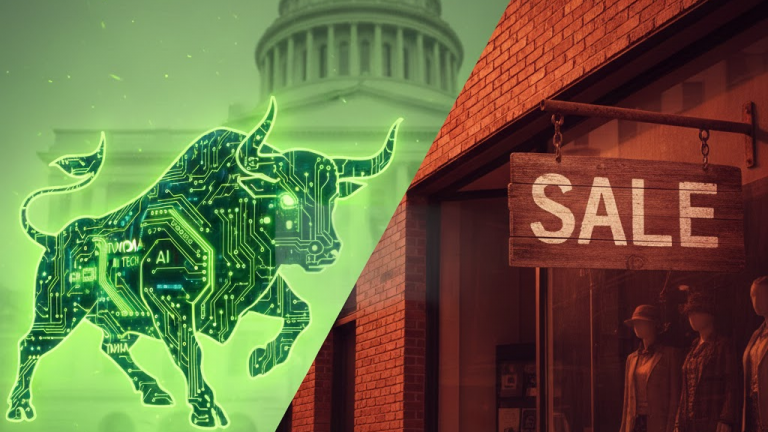The Closing Bell – October 3, 2025
Summary (TL;DR)
For investors, the key takeaway from today’s trading is that the market’s enthusiasm for Artificial Intelligence (AI) currently outweighs concerns over a U.S. government shutdown and the resulting delay in crucial economic data. While the Dow Jones Industrial Average and the S&P 500 climbed to new all-time highs, the tech-focused Nasdaq Composite experienced a slight downturn, suggesting some divergence in investor confidence. This split highlights a market grappling with a powerful, forward-looking narrative (the promise of AI) while simultaneously facing immediate uncertainties from a political stalemate in Washington.
The bottom line for anyone watching the markets is that this event demonstrates a continued willingness to prioritize long-term technological trends over short-term political disruptions. However, the lack of official economic data, particularly the key monthly jobs report, is creating an information vacuum. This could lead to increased volatility as investors and the Federal Reserve are forced to navigate with less visibility on the true health of the economy.
What Happened?
U.S. stock markets ended the week on a mixed but generally positive note. The Dow Jones Industrial Average rose by 0.5% and the S&P 500 edged up by less than 0.1%, with both indices setting new closing records for the third consecutive day. In contrast, the Nasdaq Composite, which is heavily weighted with technology stocks, slipped by 0.3%, pulling back from its own recent record.
The day’s trading occurred against the backdrop of the third day of a partial U.S. government shutdown. A significant consequence of this shutdown was the delay of the highly anticipated monthly employment report from the Bureau of Labor Statistics. This report is a key indicator of economic health that the Federal Reserve and investors rely on to gauge the strength of the labor market and potential future interest rate policies. Despite the lack of this critical data, overall market sentiment remained buoyant, largely driven by ongoing excitement surrounding advancements and investments in the AI sector.
Why It Matters?
Coming into this week, all eyes were on the first Friday of the month, which traditionally brings the pivotal U.S. jobs report. Investors and analysts were expecting this data to provide clarity on the labor market’s condition and influence the Federal Reserve’s upcoming decisions on interest rates. The prevailing expectation was for data to show a continued but gradual cooling of the job market, which would support the case for potential rate cuts.
The government shutdown has rendered the market “flying blind,” as one analyst put it. The absence of this “gold standard” data forces investors and policymakers to rely on less comprehensive private sector reports, increasing uncertainty. The market’s ability to climb to new highs in the face of this data blackout is significant. It signals that investors are, for now, betting that the underlying economic momentum, combined with the transformative potential of AI, is strong enough to weather the political turmoil and the temporary lack of visibility.
The Debate (The Bull vs. Bear Case)

The Bull Case (The Optimistic View): On one hand, optimists believe that the market’s current trajectory is well-supported by fundamental drivers that transcend short-term political noise. Analysts at J.P. Morgan have noted that historically, government shutdowns have not had a significant long-term impact on market performance. The bullish sentiment is heavily fueled by the “secular tailwinds from AI innovation,” as described by Edward Jones.
This perspective posits that the massive investments in AI infrastructure will lead to a productivity boom, justifying high valuations in the tech sector and lifting the broader market.16 Furthermore, the belief that the Federal Reserve will ultimately move to cut interest rates in the face of a cooling economy continues to provide a supportive backdrop for equities.

The Bear Case (The Cautious View): On the other hand, cautious voices point to several risks that the market may be underestimating. The primary concern is the growing uncertainty caused by the lack of economic data. Austan Goolsbee, President of the Federal Reserve Bank of Chicago, expressed this anxiety, stating, “The longer we go without the official statistics, the more blind we’re going to be at what’s happening in the economy.”
This sentiment is echoed by analysts who worry about stretched valuations, particularly in the AI sector, where some are drawing parallels to the dot-com bubble. A report from BNN Bloomberg highlights that while markets are grinding higher, “valuations remain stretched, leaving little margin for disappointment.” The slight dip in the Nasdaq, led by declines in some high-profile tech stocks like Palantir, could be an early sign of profit-taking or growing investor anxiety about the sustainability of the tech rally.
By the Numbers (Key Data & Metrics)
- Dow Jones Industrial Average (DJIA): Closed at 46,758.28, up 238.56 points (+0.5%).
- S&P 500: Closed at 6,715.79, up 0.44 points (<+0.1%).
- Nasdaq Composite: Closed at 22,780.51, down 63.54 points (-0.3%).
- Russell 2000 (Small-Cap Index): Rose 17.69 points (+0.7%) to 2,476.18,
- 10-Year Treasury Yield: Ticked up slightly to 4.12%.
- ISM Services PMI: The Institute for Supply Management’s index for the services sector unexpectedly fell to 50.0 in September. (A reading above 50 indicates expansion, while below 50 indicates contraction. This figure suggests the services sector, a large part of the U.S. economy, has stalled.)
Disclaimer: This article is for informational purposes only and does not constitute financial, investment, or legal advice. The information provided is a synthesis of publicly available data and expert analysis and should not be considered a recommendation to buy or sell any security. Investing in the stock market involves risk, including the possible loss of principal. Past performance is not indicative of future results. Readers should consult with a qualified financial advisor to determine an investment strategy that is suitable for their own personal financial situation and risk tolerance.






















